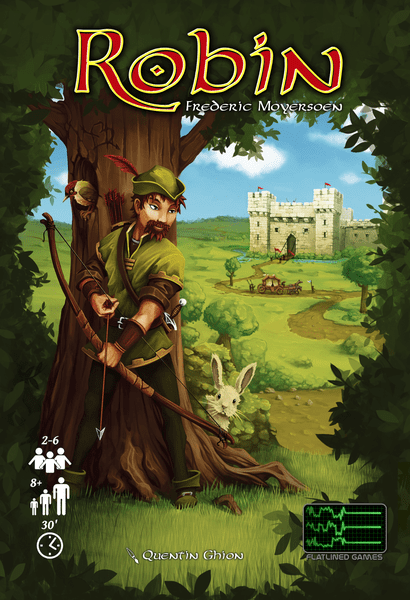Robin (2014) Board Game
The Robin board game was released in 2014, designed by Quentin “LopSkull” Ghion and featuring artwork by Flatlined Games. The game is set in a medieval theme inspired by the famous tale of Robin Hood, where players take on the role of characters from the story and engage in set collection and trading mechanics.
Game Components of Robin
How To Setup Robin
To set up the game, players start by preparing the double-layered board with the appropriate tiles for the current chapter. The hardback book guides the setup, ensuring the correct tiles are in place. Each player selects their character and places their standing figure on the board. The book and bookmarks are used to keep track of the story and essential game mechanisms.
Gameplay Mechanics and Game Objective
Player Experience
Playing **Robin** feels like navigating a choose-your-own-adventure book, but with a luxurious, overproduced feel due to the high-quality components and the hardback book. The game requires strategic decision-making, especially in managing movement and probabilities. However, some players find that the game’s structure can make it feel predictable, with the story leading to a similar endpoint regardless of player choices.
Pros
Cons
Personal Thoughts on Robin
**Robin** is ideal for fans of cooperative games and those who enjoy story-driven experiences. It is suitable for players aged 10 and up and is a great choice for families or groups looking for a game that combines strategy with a compelling narrative. However, players seeking high variability in game outcomes might find the predictability of the story a drawback. Despite this, the game’s innovative mechanics and luxurious components make it a standout in the cooperative game category.
We are supported by our audience. When you purchase through links on our site, we may earn an affiliate commission, at no extra cost for you. Learn more.

